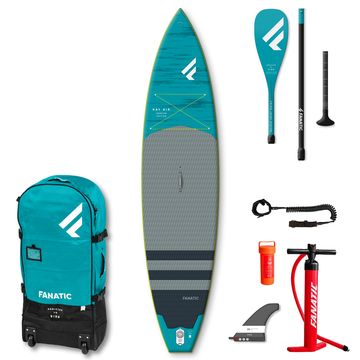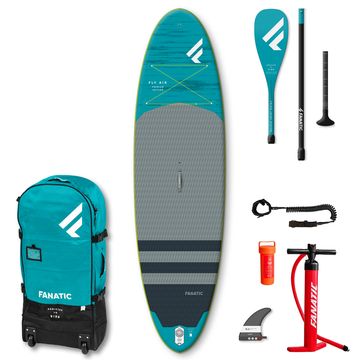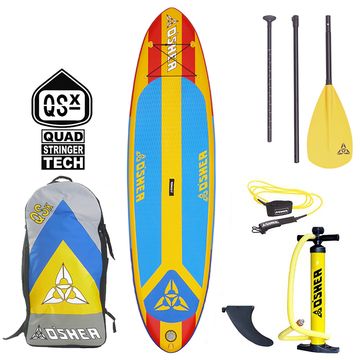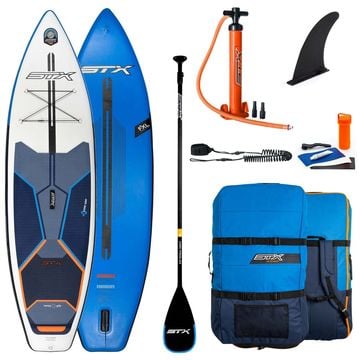A Guide to Choosing the Best Inflatable SUP
This page will help you decide what’s important when choosing a new paddleboard. Paddleboarding as a sport has grown in popularity and now there is more board choice than ever, so here we aim to help give you some considerations to help navigate your way through choosing a board.

1. Determine your intended use – The first step in choosing a SUP is to determine the type of water you will be paddling in and what activities you plan to do on your board.
2. Consider the board’s size – The size of the board you choose will affect the stability and manoeuvrability of the board. Choose a board that fits your weight and size. Volume and width are the two key sizes to know when it comes to stability.
3. Look at the board’s shape – The shape of the board will affect its stability, speed, and manoeuvrability. Round boards are more stable, but less manoeuvrable. Pointy boards are faster, but less stable.
4. Pay attention to the board’s material – The material of the board will determine its durability, weight, and price. The most common materials difference for inflatable boards is the layers – Single layered boards are light but not as strong, double layered boards are strong/stiff but heavier. Some single layered boards will have a second layer around the entire edge of the board to help durability.
5. The stiffness of a board directly effects its efficiency. If the board bends where you stand this will cause drag in the water but also act as a pivot point making it harder to paddle in a straight line. The drop stitch and amount of layers effect stiffness – the stiffer the better but the stiffest are more expensive as there is more material and manufacturing that goes into the board.
6. Look at the fin setup – The fin setup will affect the board’s stability and manoeuvrability. A tri-fin setup is best for straight line stability, while a single fin is best for speed.
7. Think about the board’s weight – The weight of the board will affect how easy it is to transport and how stable it is in the water.
8. Check the board’s warranty – A good warranty will provide peace of mind in case the board is damaged or has a manufacturing defect. Most boards will come with a years warranty.
9. Read reviews from other customers – Reviews from other customers can provide valuable insights into the board’s performance and durability.
10 Budget. Decide your budget for all the equipment you need. Most boards, but not all, come as package with a paddle, pump and leash but make sure your budget can get you everything you need to get on the water.
With these 10 things thought through you will find there is still lots of choice of boards. Most boards will come with a size guide and this will give the dimensions as well as
The most popular board type is the Allround Board. These boards are stable enough to learn yet capable enough to do some small trips. Ideal for a family fun they are usually between 32 and 35 inches wide. These boards will also work well in small surf.
Touring boards are for those who want to go a bit further. They are slightly narrower and longer and this makes them glide through the water more efficiently but trickier to learn on.
Race boards do exactly what they say on the tin. They are not for the faint hearted as they are the narrowest boards available but they are the quickest and most efficient through the water.
Surf boards tend to be shorter in length, have three fins and are built to be stiffer and this allows them to be more reactive in the surf meaning you can turn them much easier and faster whilst on a wave.
Crossover boards are boards designed so you can go paddleboarding and do another sport. So you get boards for Yoga, Windsurfing and Fishing.

Content created by King of Watersports KOW Copyright
